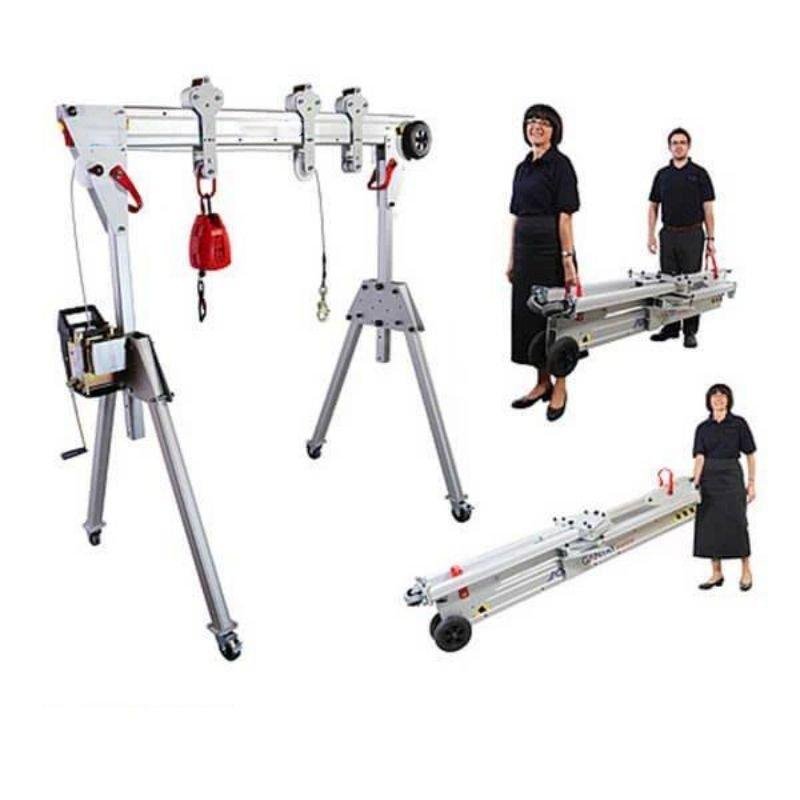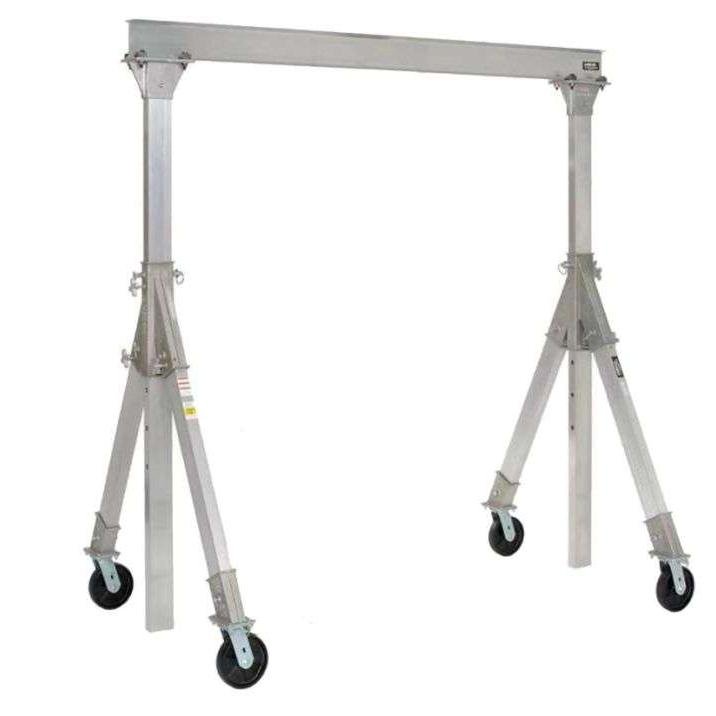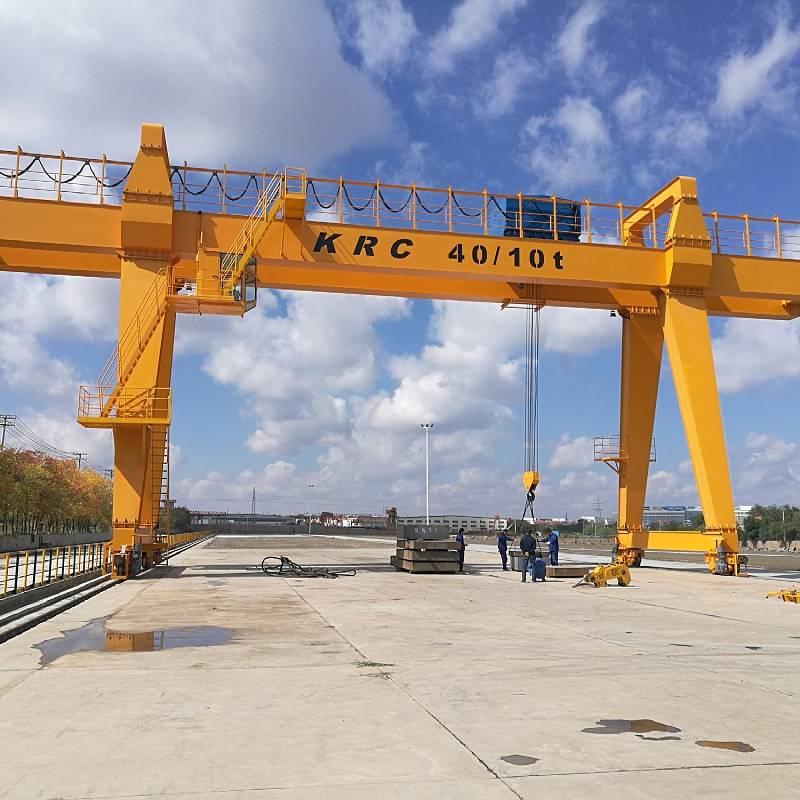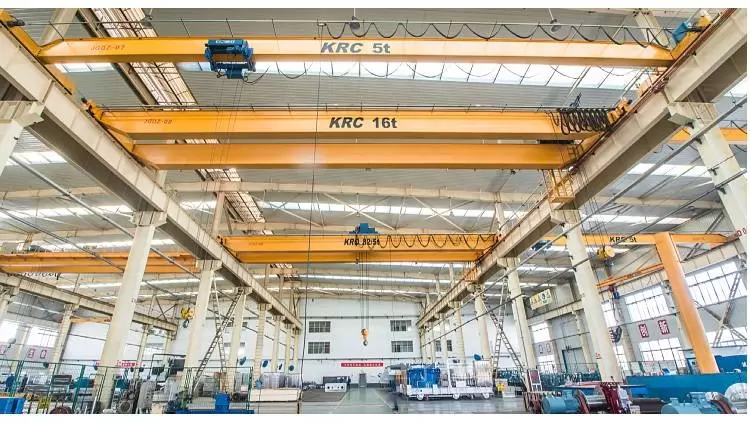Gantry cranes are vital tools in various industries, from construction to manufacturing, where lifting and moving heavy loads are a regular part of operations. Among the different types of gantry cranes, aluminum gantry cranes stand out for their lightweight yet robust nature. This guide will delve into the features, benefits, and applications of aluminum gantry cranes, including portable and mobile variants.
What is an Aluminum Gantry Crane?
Definition and Basic Structure
An aluminum gantry crane is a type of overhead crane that consists of a horizontal beam (girder) supported by two vertical legs. These cranes are typically made of aluminum, making them lighter and more resistant to corrosion than their steel counterparts.
Common Uses and Applications
Aluminum gantry cranes are used in various industries, including manufacturing, warehousing, and construction, for tasks such as lifting machinery, moving heavy equipment, and loading materials.
Types of Gantry Cranes
Portable Gantry Cranes
Portable gantry cranes are designed for mobility and flexibility. They can be easily assembled, disassembled, and transported to different job sites.

Mobile Gantry Cranes
Mobile gantry cranes come equipped with wheels or casters, allowing them to be moved around a facility or worksite with ease. They offer the flexibility to lift and move loads over a wide area.

Fixed Gantry Cranes
Fixed gantry cranes are anchored to a specific location and are ideal for applications requiring repetitive lifting in a fixed area.

Portable Gantry Cranes
Features and Specifications
Portable gantry cranes typically feature adjustable height and span, allowing them to be customized for various tasks. They are designed for easy transport and can often be disassembled into compact components.
Typical Use Cases
These cranes are ideal for fieldwork, service trucks, and maintenance applications where mobility is crucial.
Advantages of Portability
Portable gantry cranes offer the flexibility to be used in multiple locations, making them a versatile tool for businesses with diverse lifting needs.
Mobile Gantry Cranes
Features and Specifications
Mobile gantry cranes are equipped with casters or wheels, enabling them to be easily moved within a facility. They often feature brakes to secure the crane during lifting operations.
Common Applications
These cranes are commonly used in workshops, warehouses, and loading docks where loads need to be moved over different areas.
Benefits of Mobility
The ability to move the crane to different locations enhances operational efficiency and reduces the need for multiple lifting devices.
Key Considerations When Choosing a Gantry Crane
Load Capacity
Span and Height
Mobility Requirements
Environmental Conditions
Determine the maximum weight you need to lift and select a crane with an appropriate load capacity to ensure safety and efficiency.
Consider the required span (distance between the legs) and height (vertical lifting distance) to ensure the crane can handle your specific tasks.
Evaluate whether a portable or mobile crane is more suitable based on the nature of your operations and the need for movement.
Consider the working environment, including indoor or outdoor use, and exposure to elements that may affect the crane’s performance.
How to Properly Use an Aluminum Gantry Crane
- Setup and Installation:Follow the manufacturer’s guidelines for assembling and installing the crane to ensure it is set up correctly and safely.
- Safe Operation Practices:Always adhere to safety protocols, including securing the load properly, avoiding overloading, and using the crane on a stable surface.
- Maintenance Tips:Regularly inspect the crane for signs of wear and tear, lubricate moving parts, and replace any damaged components promptly.
Safety Features and Standards
- Overload Protection:Many aluminum gantry cranes come with overload protection to prevent lifting loads beyond the crane’s capacity.
- Braking Systems:Mobile gantry cranes often feature braking systems to secure the crane during operations, enhancing safety.
- Compliance with Industry Standards:Ensure the crane meets relevant industry standards, such as ANSI and OSHA, for safety and performance.
Cost Considerations
Case Studies and Examples
Real-World Applications
Many industries, from automotive to aerospace, use aluminum gantry cranes for various lifting tasks, showcasing their versatility and efficiency.
Companies have improved operational efficiency and safety by implementing aluminum gantry cranes tailored to their specific needs.


Conclusion
Aluminum gantry cranes offer numerous benefits, including lightweight construction, corrosion resistance, and ease of mobility. By considering factors such as load capacity, mobility requirements, and environmental conditions, you can select the right crane to enhance your operations.Conclusion
FAQ
What is the difference between a portable and mobile gantry crane?
Portable gantry cranes can be easily disassembled and transported, while mobile gantry cranes have wheels or casters for movement within a facility.
How do I determine the right load capacity for my needs?
Evaluate the maximum weight you need to lift and choose a crane that can handle at least that amount, considering any additional safety margins.
Are aluminum gantry cranes suitable for outdoor use?
Yes, aluminum gantry cranes are corrosion-resistant and suitable for outdoor use, though it’s important to select models designed for your specific environmental conditions.
What maintenance is required for aluminum gantry cranes?
Regular maintenance includes inspecting for wear, lubricating moving parts, and replacing any damaged components to ensure safe operation.
Can I customize my aluminum gantry crane?
Many manufacturers offer customizable options such as adjustable height, span, and additional safety features to meet specific needs.